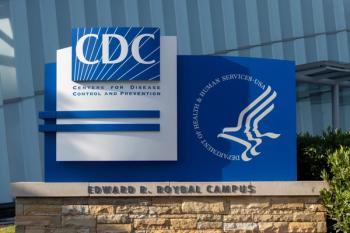
Fusion Protein Effective Against Resistant Leukemia
Efficacy and safety demonstrated in models of aggressive leukemia.
Efficacy and safety demonstrated in models of aggressive leukemia.
Researchers have developed a new protein-based therapy that may offer a high level of efficacy treating drug-resistant leukemia cells.
Published online January 26, 2015 in the Journal of Clinical Investigation, researchers found the new fusion protein to be safe and effective in mouse models of acute lymphoblastic leukemia (ALL).
"Despite advances in available therapies, unmet and urgent needs remain in the fight against leukemia,” principal investigator Fatih M. Uckun, MD, PhD, said in a press release. “We still have children with disease that our drugs can't help enough. And for patients who relapse, their chances of long-term survival are less than 20%. We've got to do better."
Produced by immune system cells, TNF-related apoptosis-inducing ligand (TRAIL) has the potential to cause apoptosis in tumor cells through binding to 2 death receptors called TRAIL-receptor 1 and TRAIL-receptor 2.
"TRAIL is a naturally occurring part of the body's immune system that kills cancer cells without toxicity to normal cells,” Dr. Uckun said. “However, earlier clinical trials using TRAIL as a potential anti-cancer medicine candidate have not been successful, largely because of its propensity to bind, not only to cancer cells, but also to 'decoy' receptors.”
A previously undiscovered protein called CD19-Ligand, which is a natural ligand of human CD19, is expressed by nearly all ALL cells. The researchers theorized that fusing the protein to the portion of TRAIL that can kill cancer cells may provide a powerful tool to fight leukemia cells.
This treatment would be able to hunt, bind, and kill just the leukemia cells carrying CD19 as the target docking site, as opposed to chemotherapy drugs. The unique assembly of the 2 proteins into one fusion protein was dubbed therapeutic candidate CD19L-sTRAIL.
The study was able to demonstrate that the conversion of the fusion protein into a more potent membrane-anchored form is able to trigger apoptosis in even the most aggressive and therapy-resistant form of leukemia cells.
"Due to its ability to anchor to the surface of cancer cells via CD19, CD19L-sTRAIL was 100,000-fold more potent than sTRAIL, and consistently killed more than 99 percent of aggressive leukemia cells taken directly from children with ALL, not only in the test tube, but also in mice," Dr. Uckun said. “Administering only two or three doses of CD19L-sTRAIL significantly improved the survival outcome of mice challenged with an otherwise invariably fatal dose of human leukemia cells, without side effects. Its therapeutic potency in mice was superior to that of standard chemotherapy combinations as well as radiation therapy.”
Newsletter
Stay informed on drug updates, treatment guidelines, and pharmacy practice trends—subscribe to Pharmacy Times for weekly clinical insights.




















































































































































































































